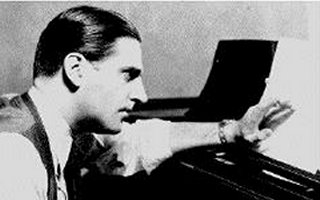4th of July Trivia
Here is some Independence Day trivia to go with today’s 4th of July festivities.
Some famous folks who were born on the 4th of July are:
1804 – Nathaniel Hawthorne, American author
1872 – Calvin Coolidge, the 30th president of the USA
1902 – Meyer Lansky, Belarusian-American gangster
1911 – Mitch Miller, American singer and producer
1918 – Twins Esther Pauline and Pauline Esther Friedman, better known as advice columnists Ann Landers and Dear Abby
1924 – Eva Marie Saint, American actress
1927 – Gina Lollobrigida, Italian actress
1927 – Neil Simon, American playwright and screenwriter
If you ever read that Ulysses S. Grant was born on July 4th on a trivia site, that’s wrong. Grant’s birthday was April 27. It was his grandson, Ulysses S. Grant III who was born on the 4th of July.
On July 4, 1826, while the USA celebrated its independence, John Adams, its second president, passed away at the age of 90. It is often reported that his last words were “Jefferson survives,” but Thomas Jefferson, third president of the USA, had passed away about 5 hours earlier that very same day. He was 83 years old. Six years later in 1831, James Monroe, our 5th president, also passed away on the 4th of July at age 73.
Other July 4th freedom celebrations:
Northern Mariana Islands, Liberation Day (commemorating its 1945 liberation from Japan)
Rwanda, Liberation Day (commemorating the 1994 defeat of the genocidal regime by the RPF)
Other important events on July 4th:
1802 – At West Point, New York, the United States Military Academy opens.
1803 – The Louisiana Purchase is announced to the American people.
1817 – In Rome, New York, construction on the Erie Canal begins.
1827 – Slavery is abolished in New York State.
1831 – Samuel Francis Smith writes My Country, ‘Tis of Thee for the Boston, Massachusetts July 4 festivities.
1855 – In Brooklyn, New York City, the first edition of Walt Whitman’s book of poems, Leaves of Grass, is published.
1863 – American Civil War: Siege of Vicksburg: Vicksburg, Mississippi surrenders to Ulysses S. Grant after 47 days of siege. One hundred fifty miles up the Mississippi River, a Confederate Army was repulsed at the Battle of Helena, Arkansas.
1863 – American Civil War: The Army of Northern Virginia withdrew from the battlefield after losing the Battle of Gettysburg, signalling an end to the Southern invasion of the North.
1881 – In Alabama, the Tuskegee Institute opens.
1886 – The people of France offer the Statue of Liberty to the people of the United States.
1894 – The short-lived Republic of Hawaii is proclaimed by Sanford B. Dole.
1903 – Philippine–American War officially is concluded.
1913 – President Woodrow Wilson addresses American Civil War veterans at the Great Reunion of 1913.
1943 – World War II: The Battle of Kursk, the largest full-scale battle in history and the world’s largest tank battle, begins in Prokhorovka village.
1960 – Due to the post-Independence Day admission of Hawaii as the 50th U.S. state on August 21, 1959, the 50-star flag of the United States debuts in Philadelphia, Pennsylvania, almost ten and a half months later 1966 – U.S. President Lyndon B. Johnson signs the Freedom of Information Act into United States law. The act went into effect the next year.
2004 – The cornerstone of the Freedom Tower is laid on the site of the World Trade Center in New York City.
2009 – The Statue of Liberty’s crown reopens to the public after eight years of closure due to security concerns following the September 11 attacks.
We may earn a small commission from qualifying purchases made from Amazon.com links at no cost to our visitors. Learn more: Affiliate Disclosure.









Traditionally, like in 1959, that is the date where the flag’s stars indicate the new states. This was pushed forward for the flag covering the coffin of Abraham Lincoln.